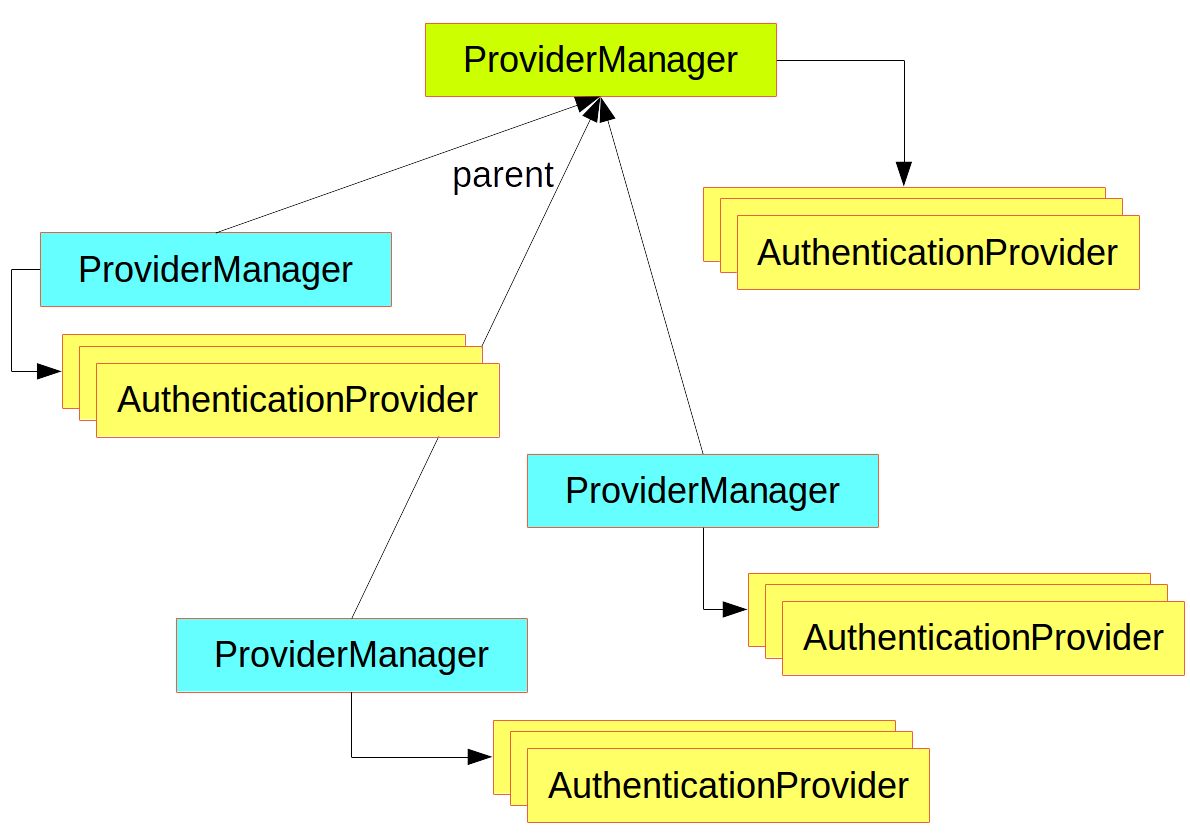- Authentication
public interface AuthenticationManager {
Authentication authenticate(Authentication authentication)
throws AuthenticationException;
}- Authorization, AKA: Access Control
The main strategy interface for authentication is AuthenticationManager, which has only one method:
public interface AuthenticationManager {
Authentication authenticate(Authentication authentication)
throws AuthenticationException;
}- An AuthenticationManager can do one of 3 things in its authenticate() method:
-
Return an Authentication (normally with authenticated=true), if input represents a valid principal.
-
Throw an AuthenticationException (which is a runtime exception.) if input represents an invalid principal.
-
Return null if it cannot decide.
- The most commonly used implementation of AuthenticationManager is ProviderManager, which delegates to a chain of AuthenticationProvider instances.
- An AuthenticationProvider is a bit like an AuthenticationManager, but it has an extra method to allow the caller to query whether it supports a given Authentication type:
public interface AuthenticationProvider {
Authentication authenticate(Authentication authentication)
throws AuthenticationException;
boolean supports(Class<?> authentication);
}- The most commonly used configuration helper is the AuthenticationManagerBuilder.
@Configuration
public class ApplicationSecurity extends WebSecurityConfigurerAdapter {
... // web stuff here
@Autowired
public void initialize(AuthenticationManagerBuilder builder, DataSource dataSource) {
builder.jdbcAuthentication().dataSource(dataSource).withUser("dave")
.password("secret").roles("USER");
}
}- The AuthenticationManagerBuilder is @Autowired into a method in a @Bean.
@Configuration
public class ApplicationSecurity extends WebSecurityConfigurerAdapter {
@Autowired
DataSource dataSource;
... // web stuff here
@Override
public void configure(AuthenticationManagerBuilder builder) {
builder.jdbcAuthentication().dataSource(dataSource).withUser("dave")
.password("secret").roles("USER");
}
}- If we had used an @Override of a method in the configurer, the AuthenticationManagerBuilder would be used only to build a “local” AuthenticationManager, which would be a child of the global one.
- In a Spring Boot application, you can @Autowired the global one into another bean, but you cannot do that with the local one unless you explicitly expose it yourself.
- The core Authorization is AccessDecisionManager.
- There are three implementations provided by the framework and all three delegate to a chain of AccessDecisionVoter instances.
The typical layering of the handlers for a single HTTP request:
-
The client sends a request to the application, and the container decides which filters and which servlet apply to it based on the path of the request URI.
-
At most, one servlet can handle a single request, but filters form a chain, so they are ordered.
-
The order of the filter chain is very important, and Spring Boot manages it through two mechanisms: @Beans of type Filter can have an @Order or implement Ordered, and they can be part of a FilterRegistrationBean that itself has an order as part of its API.
-
In a Spring Boot application, the security filter is a @Bean in the ApplicationContext, and it is installed by default so that it is applied to every request.
- a cheat sheet for Spring Authentication

